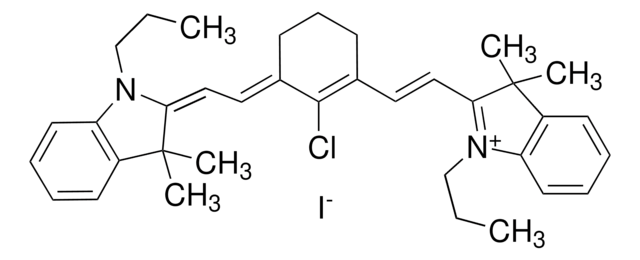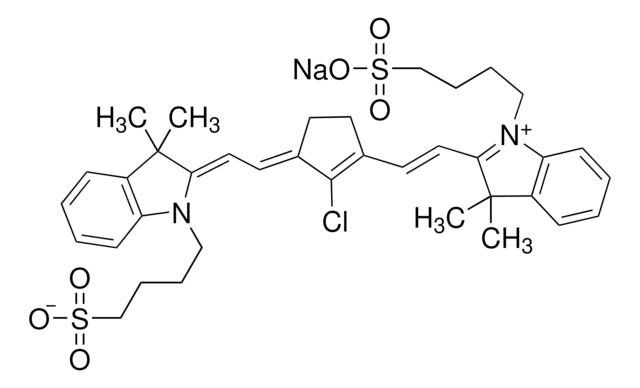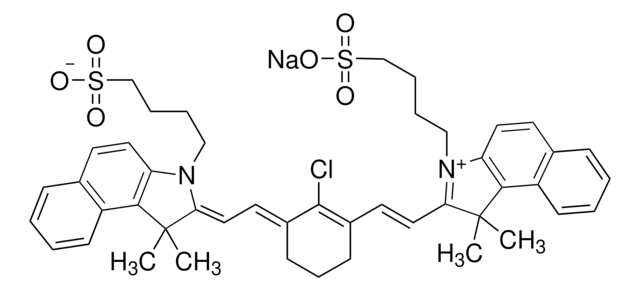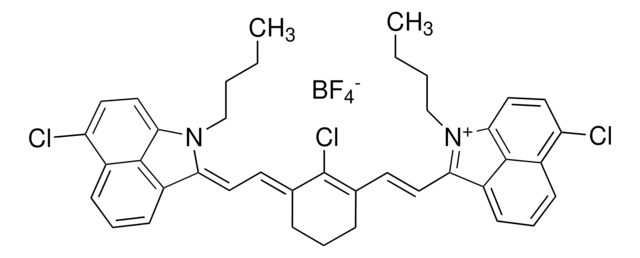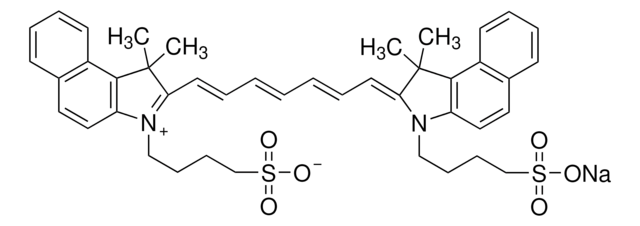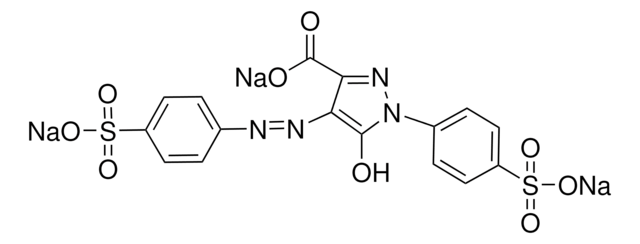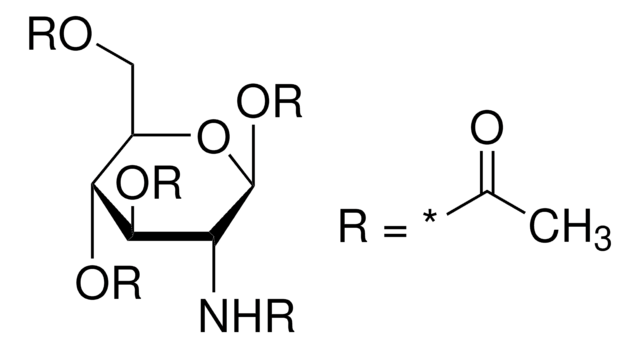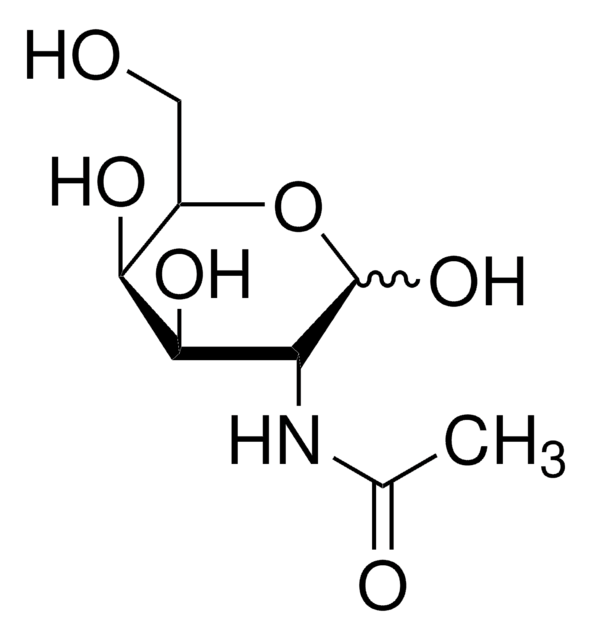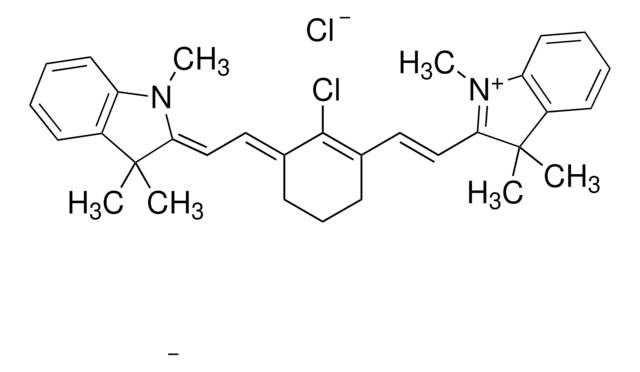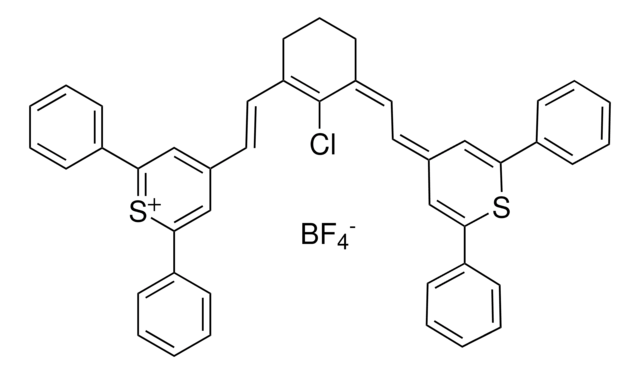543292
IR-783
Dye content 90 %
Synonym(s):
2-[2-[2-Chloro-3-[2-[1,3-dihydro-3,3-dimethyl-1-(4-sulfobutyl)-2H-indol-2-ylidene]-ethylidene]-1-cyclohexen-1-yl]-ethenyl]-3,3-dimethyl-1-(4-sulfobutyl)-3H-indolium hydroxide, inner salt sodium salt
About This Item
Recommended Products
form
solid
Quality Level
composition
Dye content, 90%
mp
209-212 °C (lit.)
λmax
782 nm
SMILES string
[Na+].CC1(C)\C(=C\C=C2/CCCC(\C=C\C3=[N+](CCCCS([O-])(=O)=O)c4ccccc4C3(C)C)=C2Cl)N(CCCCS([O-])(=O)=O)c5ccccc15
InChI
1S/C38H47ClN2O6S2.Na/c1-37(2)30-16-5-7-18-32(30)40(24-9-11-26-48(42,43)44)34(37)22-20-28-14-13-15-29(36(28)39)21-23-35-38(3,4)31-17-6-8-19-33(31)41(35)25-10-12-27-49(45,46)47;/h5-8,16-23H,9-15,24-27H2,1-4H3,(H-,42,43,44,45,46,47);/q;+1/p-1
InChI key
QQIQAVJARACLHE-UHFFFAOYSA-M
Related Categories
General description
Application
Features and Benefits
Storage Class Code
11 - Combustible Solids
WGK
WGK 3
Flash Point(F)
Not applicable
Flash Point(C)
Not applicable
Personal Protective Equipment
Regulatory Listings
Regulatory Listings are mainly provided for chemical products. Only limited information can be provided here for non-chemical products. No entry means none of the components are listed. It is the user’s obligation to ensure the safe and legal use of the product.
JAN Code
543292-VAR:
543292-250MG:
543292-BULK:
Choose from one of the most recent versions:
Already Own This Product?
Find documentation for the products that you have recently purchased in the Document Library.
Customers Also Viewed
Articles
Graphene has emerged as the new wonder material. Being only one atom thick and composed of carbon atoms arranged in a hexagonal honeycomb lattice structure, the interest in this material has exploded exponentially since 2004 when it was first isolated and identified using a very simple method.
Global Trade Item Number
| SKU | GTIN |
|---|---|
| 543292-250MG | 4061833482995 |
Our team of scientists has experience in all areas of research including Life Science, Material Science, Chemical Synthesis, Chromatography, Analytical and many others.
Contact Technical Service